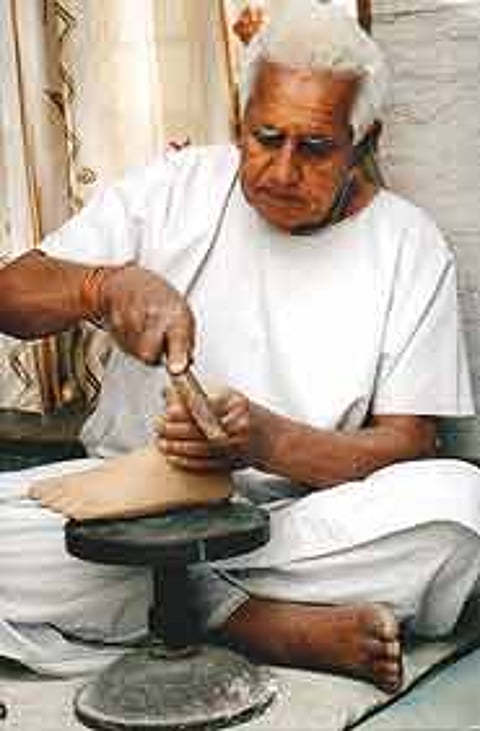Sharma is unperturbed that the credit for his original idea of the Jaipur foot largely went to orthopaedic surgeon Dr P.K. Sethi. Sharma remained behind the scenes. Even today, at 85, he works relentlessly at Mahaveer Viklang Sahayta Samiti (MVSS), an NGO—overseeing, supervising and researching on how to make the Jaipur foot light, durable, low-cost and more user-friendly.
The Long Walk ToFreedom
At 85, the true architect of the Jaipur foot toils on, anonymous,all in quest of a better foot
Says Sharma: "The smile and hope on a patient’s face when he gets his new leg is enough to wipe out any unpleasant memory. I can’t do without work. My day remains incomplete without visiting the workshop where I spend at least 6-7 hours each day." Hailing from a family of sculptors, he grew up watching his father chisel stones and metal. An instructor at an art and craft school in Jaipur, he was called by Sethi to teach handicapped children at Jaipur’s Sawai Man Singh (SMS) Hospital.
That was over 40 years ago. This meeting between the two led to one of the most useful inventions of the century. At that time, Sethi used to fit 5-6 artificial limbs a year. Rich patients went for the wooden American model which needed shoes and was culturally unsuited for India. It set Sharma’s mind working. In December ’66, when a who official visited SMS, Sharma’s inquisitive questions about lighter artificial foots left him stumped. He suggested Sharma try making one himself. He was ready with a lighter aluminium foot.
But sadly, no aid was forthcoming. His funds were already used up yet he was convinced he would find a substitute soon. A visit to a bicycle repair shop did the trick. While waiting for a puncture to be repaired, he saw a worker retreading a truck tyre with vulcanised rubber. Sharma had a brainwave. He rushed back to the hospital and returned with an amputee and a foot cast. He asked the retreader if he could cast a rubber foot. The experiment succeeded to an extent but rubber alone was not good enough. The miracle Jaipur foot became a reality only after the rubber foot was shaped around a hinged wooden ankle-wrapping and then vulcanising this composite form.

But the dearth of finances continued. In 1970, Arjun Agarwal, the coal king of Jharia, who had come to SMS after an accident, was so impressed with Sharma’s workshop that he donated machines and paid four workers. That was when the Jaipur foot started becoming famous. In 1971, Sethi presented his papers before the British orthopaedic surgeons of Oxford.
The MVSS took over the Jaipur foot and started distributing it free to poor amputees in 1975. Today, more than 300,000 amputees have been helped around the world. Although Sethi and Sharma parted ways in 1981, the real architect of Jaipur foot says: "I could have become rich if I had patented it but blessings of the patients count more than money."
Contact Mahaveer Viklang Sahayta Samiti, Malviya Nagar, Calgary Road, Jaipur. Tel: O141-2520485
Tags